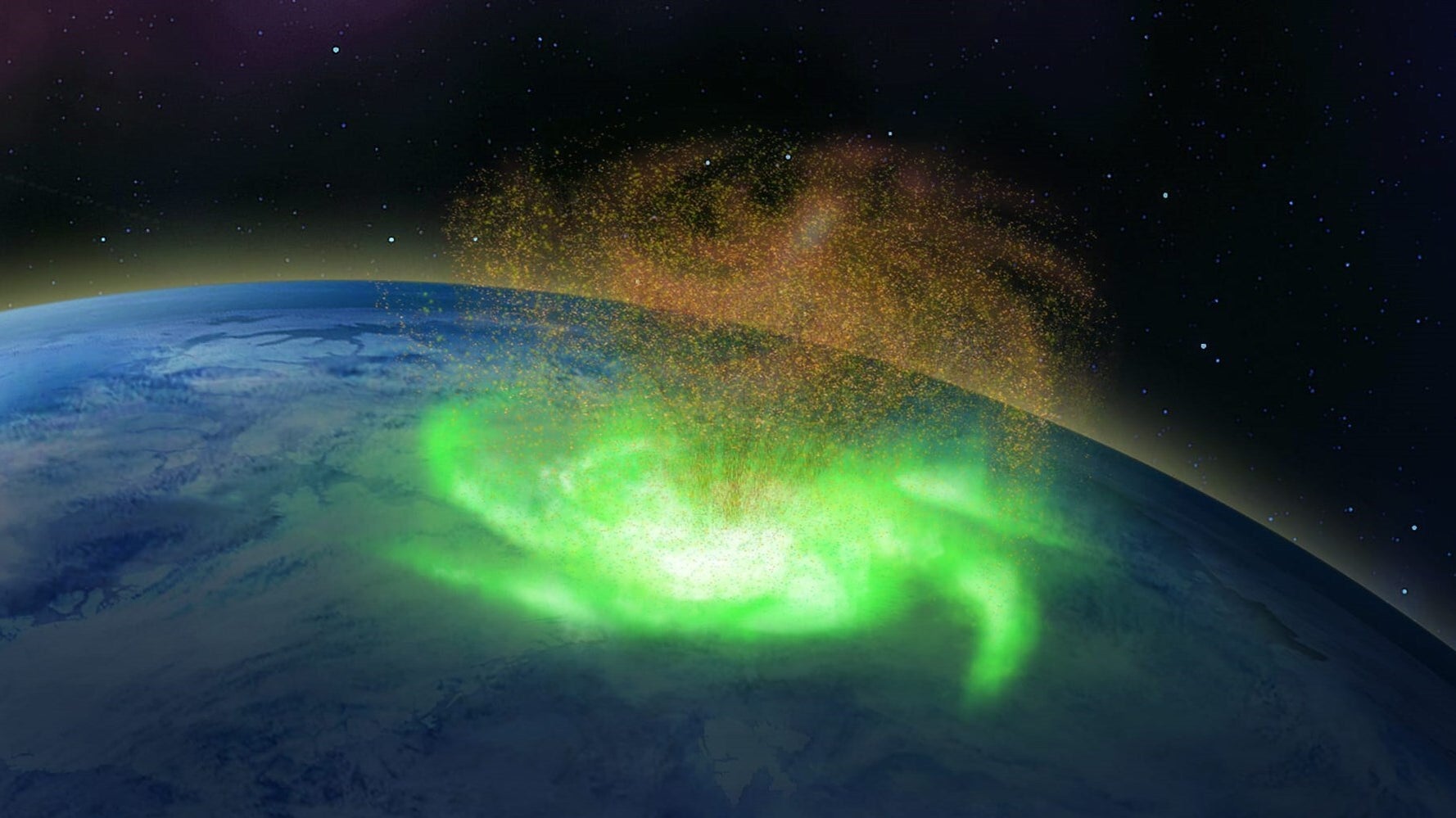
Scientists have identified a “space hurricane” – an approximately 620 miles wide swirling mass of plasma in the upper atmosphere above the magnetic North Pole.
The hurricane occurred in August 2014, but scientists didn’t know it had happened until more recently, when an international team of researchers noticed the phenomenon while studying satellite observations from that period. The discovery, the first of its kind, was published last month in the journal Nature Communications.
“Until now it was uncertain that even space plasma hurricanes existed, so to prove this with such a striking observation is unbelievable,” said Mike Lockwood, a space scientist at the University of Reading in the United Kingdom and co-. author of the study. in a statement.
The hurricane, which lasted about eight hours, would have been visible to the naked eye, but it is unlikely anyone saw it because it occurred at such a high latitude, Lockwood told USA Today.
However, an illustration by lead study author Qing-He Zhang of Shandong University in China shows what it might have looked like.

Qing-He Zhang, Shandong University An illustration of what the space hurricane might have looked like.
Larry Lyons, a professor of atmospheric and oceanic sciences at the University of California, Los Angeles, explained to NBC News why the plasma vortex in space was similar to hurricanes we know better on Earth.
“You could see plasma currents going around like the winds of the space hurricane,” he said. “These currents were strongest at the edge and decreased as you moved towards the eye in the center, before picking up on the other side, just like the air current in a regular hurricane.”
And while a hurricane on Earth rained water, the space hurricane rained electrons into the atmosphere.
Changes in space weather can affect things like GPS signals and satellite communications. Researchers suspect that space hurricanes are relatively common and simply have not been detected – until now.
Zhang told Vice his team had already found other cases in satellite data “showing the characteristics of the space hurricane.” The published study describes just one, which it called ‘the best’ in terms of how clear it was.
Calling all HuffPost super fans!
Apply for membership to become a founding member and help shape the next chapter of HuffPost